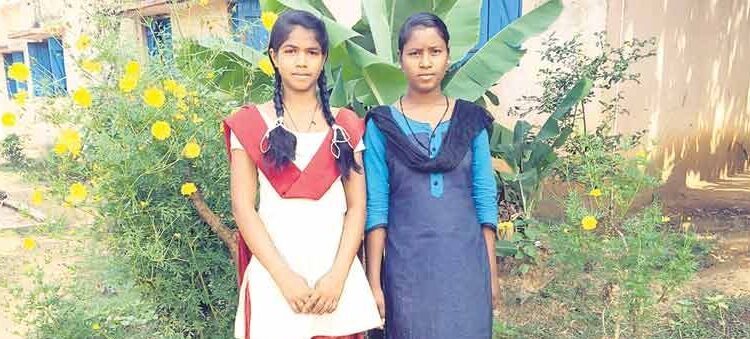
Students of Jharkhand village school convince parents to call off child marriage
Married girls aged 15-19 years are twice more likely to die during childbirth, UNICEF reports.
Sarita, 15, and her friend Mali, 14, are nothing short of stars at the middle school in Punsa village, about 25 km from the steel hub of Jamshedpur, in Jharkhand. Earlier this year, the two stopped their families from getting them married off — with a little help from “Pradeep sir”, their teacher Pradeep Kumar.
They went to each other’s homes, along with fellow students and Kumar, and successfully convinced their families in calling off the wedding plans.
In a state with the highest child marriage rate in India after Rajasthan and Bihar, according to Annual Health Survey, 2010-2011, and where child marriage among girls is as high as 44 per cent in rural areas and 21 per cent in urban centres, as National Family Health Survey 2015-2016 reported, it is a huge victory. And leading that fight is Pradeep, a lean, soft-spoken, bespectacled and balding teacher with his ‘army’ of students.
Stating that child marriage has gradually declined in areas around Jamshedpur, although stray cases still emerge, Kumar said, “When students such as Mali and Sarita bring cases to my notice I take a group of students to talk the parents out of marrying off their minor children.”
The shock fell on Mali in February this year, when her sister called her home from school. February is the harvest season, when most marriages are fixed in villages of their East Singhbhum, and neighbouring districts of eastern Jharkhand.
“There were guests at home I had never met. My mother asked me to serve them tea. I wondered why…. I was later told that I would be married into the family,” the class VIII student said.
Mali told her friend Sarita, who informed their teacher. “Pradeep-sir took some of us (students) and met Mali’s parents. He told them that child marriage is a punishable crime; we said leaving school for marriage would ruin Mali’s childhood,” Sarita said.
Besides, she added, “we told them that a child bride runs many medical risks, including death during early pregnancies.”
Sarita and her young friends know their facts. According to UNICEF data, babies of child brides are 60 per cent more likely to die before their first birthday than children of mothers who are over 19 years. Married girls aged 15-19 years are twice more likely to die during childbirth, UNICEF reports.
Within weeks, Sarita found that her parents were planning her wedding as well. Kumar, and his students, including Mali, this time went to Sarita’s home and told her elder brother Vibhishan, a former student of Kumar’s, about her predicament.
“Vibhishan never disobeys me, although he is no longer my student,” Kumar said. “After I convinced him that an educated Sarita would not only be biologically fit to marry and conceive after she is 18 but that she also stands a better chance to get a more educated and suitable groom, he spoke to his parents and convinced them.”
Imtiaz Ahmed, block development officer of Boram and also the child marriage provisional officer for the block, said while child marriage is gradually declining in areas around Jamshedpur, they still get the odd cases. “Usually we are successful in holding panchayats and dissuading (the families). But when we get a tip-off at the last moment — barely hours before the scheduled marriage — and face resistance from families, we have to register FIRs,” said Ahmed.
Back at the school, as Mali said that says she wants to be a teacher, since all village schools do not have adequate teachers, Pradeep Kumar said, “We get to know when anyone is upset in class — that’s how Sarita and Mali’s predicament was discovered. They are brave girls, and we will always support their education and help them follow their dreams.”
Child Welfare Committee chairperson Prabha Jaiswal said, “We have made the Child Marriage Prohibition Act but child marriage enjoys such social acceptance that no law or action can abate this menace. When we go to stop a marriage we are threatened and asked to back off. An attitude change is required before this social ill can be rooted out completely.”
Source: indianexpress.com
